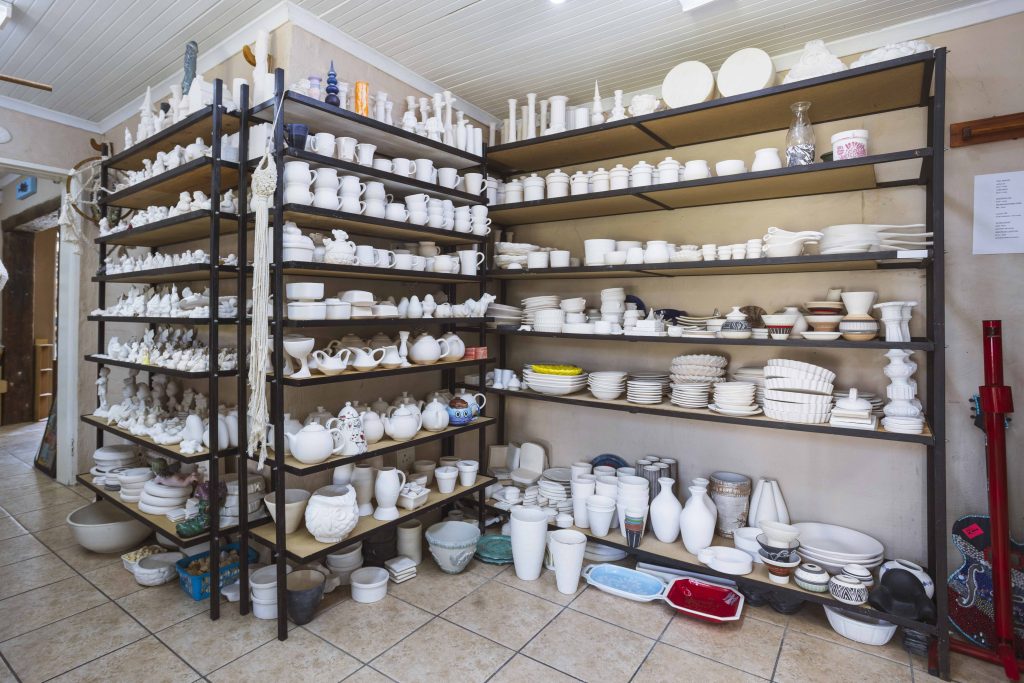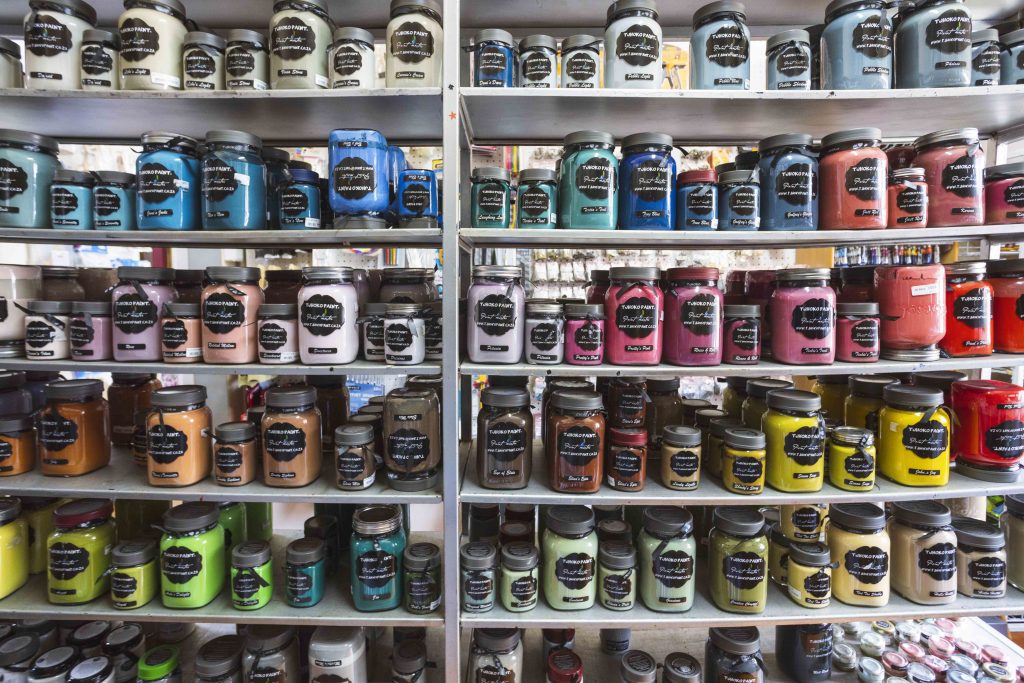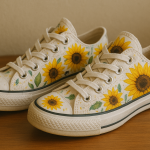Origins of Pottery and When Pottery Began to Be Painted
Pottery, the craft of shaping clay into functional or decorative objects and then hardening them with heat, is one of the oldest human inventions.
It was not long before early potters realized the aesthetic potential of their creations, leading to the birth of painted pottery. The earliest evidence of painted pottery dates back to around 5000 BC in ancient Mesopotamia and Persia, where artisans used mineral-based pigments to decorate their wares.
Ancient Greek pottery and China’s Han dynasty pottery with its glazed and painted ceramics, became prized luxury items.
By the Middle Ages, pottery painting had become an integral part of cultural expression, a tradition that continues to inspire hobbyists today. The pottery that has survived from ancient times, particularly that which is decorated is worth a lot of money today.
In the modern era, there are artists whose painted pottery is extremely popular and reach very high prices.
Nelmari, owner of A Peace of Art, says, “Pottery painting is a hobby that is easy to start and relatively inexpensive and it provides endless opportunities for personalization and artistic expression,”


What Pottery Is Used in Hobby Painting?
Modern pottery for hobby painting is typically made from a few types of clay, each with unique characteristics that influence the look and feel of finished pieces.
The main varieties are earthenware, stoneware, and porcelain:
- Earthenware: This is the most common clay used in hobbyist studios. It is relatively soft, porous, and fired at lower temperatures. Bisque earthenware (pre-fired, unglazed pottery) is the staple canvas for most beginner painters—sturdy, inexpensive, and available in countless shapes.
- Stoneware: More durable than earthenware, stoneware is fired at higher temperatures and is less porous after firing. Some studios offer stoneware for painting, as it allows for more utilitarian wares like mugs and dinner plates.
- Porcelain: This fine, white clay is prized for its delicate appearance and translucency. While less common in hobby studios due to its cost and fragility, some advanced painters enjoy working with porcelain for detailed or ornamental projects.
Before a piece of pottery reaches your paintbrush, it has usually been formed (wheel-thrown, hand-built, or molded), dried, and then bisque-fired in a kiln. This bisqueware is absorbent, making it ideal for accepting paint and glaze.
The bisque stage is a crucial turning point: the clay is no longer raw and fragile, yet it’s not fully vitrified and waterproof—perfect for creative experimentation.
What Tools and Equipment Are Used for Painting Pottery?
“The tools needed for pottery painting are accessible and user-friendly, making the hobby inviting for all ages and skill levels,” says Nelmari.
Here are the essentials:
- Bisque Pottery: Your canvas—choose from plates, mugs, bowls, figurines, or custom shapes.
- Paintbrushes: Available in various shapes and sizes, from fine-tipped brushes for detail work to wide, flat brushes for washes and backgrounds.
- Sponges: Used for applying base coats, creating textures, or wiping away mistakes.
- Glazes and Underglazes: Glazes are liquid glass coatings that create a glossy or matte finish after firing. Underglazes are coloured slips (liquid clay with pigment) painted onto bisque before glazing, allowing for precise, vivid designs.
- Palettes and Mixing Trays: For blending and thinning colours.
- Stencils and Stamps: Handy for adding patterns, motifs, and lettering with minimal effort.
- Detailing Tools: Wooden styluses, sgraffito tools, and fine-point pens can be used to scratch designs or apply intricate lines.
- Water Cups and Towels: For cleaning brushes and wiping surfaces.
- Protective Clothing: Aprons and smocks keep paint and glaze off your clothes.
- A Kiln: After painting, pottery must be fired in a kiln to set the glaze, making it food-safe and durable. A Peace Of Art will handle this step for you if you don’t have access to a kiln at home.
Nelmari adds, “The only true requirement is an eagerness to experiment—pottery painting welcomes both the minimalist and the maximalist.”


What Is the Process of Painting Pottery?
Painting pottery is as much about the journey as the destination. Nelmari says that whether you’re a first-timer or an experienced artist, the process is rewarding and deeply meditative.
Here is a step-by-step look at how it unfolds:
- Choose Your Piece: Select a bisque item that inspires you. Pottery studios offer a dazzling array, from functional dinnerware to whimsical figurines.
- Plan Your Design: Some painters sketch their ideas on paper first, while others dive in freehand. You can use pencils to lightly outline designs directly on the bisque surface—they’ll burn away in the kiln.
- Clean the Surface: Wipe your pottery piece with a damp sponge to remove any dust or debris. This ensures smooth, even paint coverage.
- Apply Underglaze or Paint: Using your chosen brushes, sponges, or stamps, start painting. Multiple coats may be needed for deeper colours; allow each layer to dry before adding the next. Don’t be afraid to mix colours or experiment with textures.
- Add Details: Use fine brushes or detail tools to add lines, dots, or special effects. Layering colors can achieve shading and depth, much like in watercolor painting.
- Let It Dry: After painting, let your piece dry thoroughly. This prevents smudging and ensures the glaze adheres properly.
- Apply Clear Glaze: Most studios offer a clear, food-safe glaze that is brushed or dipped over your painted piece. This gives the pottery its signature shine and seals in your colors.
- Firing in the Kiln: The glazed piece is loaded into a kiln, where it’s fired at high temperatures (typically 1,800–2,300°F or 982–1,260°C). The heat bonds the glaze with the clay, creating a durable, glossy finish.
- Admire and Use: Once cooled, your pottery is ready to be admired, gifted, or put to use. Painted pottery is both a work of art and a functional object—each piece is unique to its maker.
Nelmari says, “The beauty of pottery painting is that there are no strict rules—mistakes often become happy accidents, and every piece reflects the hands and heart of the creator.”
Whether you attend A Peace Of Art workshop or paint in your own home, the process connects you to an ancient lineage of makers and storytellers.
“Pottery painting as a hobby offers much more than a finished cup or plate; it invites mindfulness, fosters creativity, and brings people together,” says Nelmari.
With every brushstroke, you’re not just decorating an object—you’re continuing a tradition that spans millennia, adding your personal chapter to the splendid story of clay and colour.
Learn the art of Pottery Paint at A Peace Of Art’s workshops
“At A Peace Of Art we believe that arts and crafts that we teach, are essential for self-discovery and fulfilment. Our hands-on creativity classes bring inner peace and improve mental health,” concludes Nelmari.
A Peace Of Art holds regular workshops on Creative Pottery Painting. Follow them on social media or contact one of their offices to find out when the next course is being run.
Contact A Peace of Art for all your equipment and classes
Facebook: @apeaceofartcreativeartsandcraftsworkshops
Instagram: @apeaceofart
Port Elizabeth: 85 Main Road, Walmer. Tel: 072 304 0797
Bloemfontein: 7 Avenham Street, Avenham. Tel: 076 192 1637
Click here to read similar articles
For more articles like this click here.
If you enjoyed this website then check out our other sites: Wedding and Function, Home Food and Travel, Thirsty Traveler, Boat Trips for Africa, Bargain Buys, Business Link.
Need help with your online marketing then visit Agency One.










